Birdwatching in the Himalayas
Home to almost 1,000 species of bird, as well as a great diversity of unique plant and animal species, the Himalayas is a must-visit destination for birdwatching enthusiasts.
Stretching over the northeastern border of India, the Himalayas cover an incredible 1,500 miles (2,400km) of land and cross five countries – Nepal, China, Pakistan, Bhutan and India. The immense mountain range hosts some of the world’s highest peaks, including Mount Everest. It is no wonder the Himalayas are a haven for biodiversity.
Himalayan biodiversity
Despite the harsh conditions (particularly at higher altitudes), more than 10,000 plant species inhabit the Himalayas, and some 3,160 of those are endemic to the area and not found anywhere else in the world. From the pygmy hog to the golden langur, many of the Himalayan animal species are endemic too, and the region is particularly well known for its bird richness.
Almost 980 bird species have been reported in the Himalayas, including some of the most magnificent birds on the planet. A huge proportion of Indian birds can be spotted in the Himalayas and while only 15 of the region’s bird species are endemic, many are extraordinary. Thanks to its sheer size, there are plenty of regions visitors choose to encounter Himalayan bird biodiversity. Some of the most popular spots include the Great Himalayan National Park, Kedarnath Wildlife Sanctuary and Binsar Wildlife Sanctuary.
Himalayan bird checklist
From giant eagles to tall cranes and tiny tits, there is an enormous diversity of birds to be spotted in the Himalayas. It wouldn’t be possible to list them all – or even all of the most impressive species – so here is a checklist containing just some of the incredible bird species you might spot on a birdwatching adventure in the Himalayas.
1. Himalayan monal
The number one species on many birdwatchers’ lists for their Himalayan trip, the male Himalayan monal is a stunningly colourful bird with an intricate crest. Females are much less colourful, but their brown/grey plumage is still beautifully patterned. These birds reach around 70cm and can be found at altitudes of 2,500 to 4,500m in forest and scrubland.
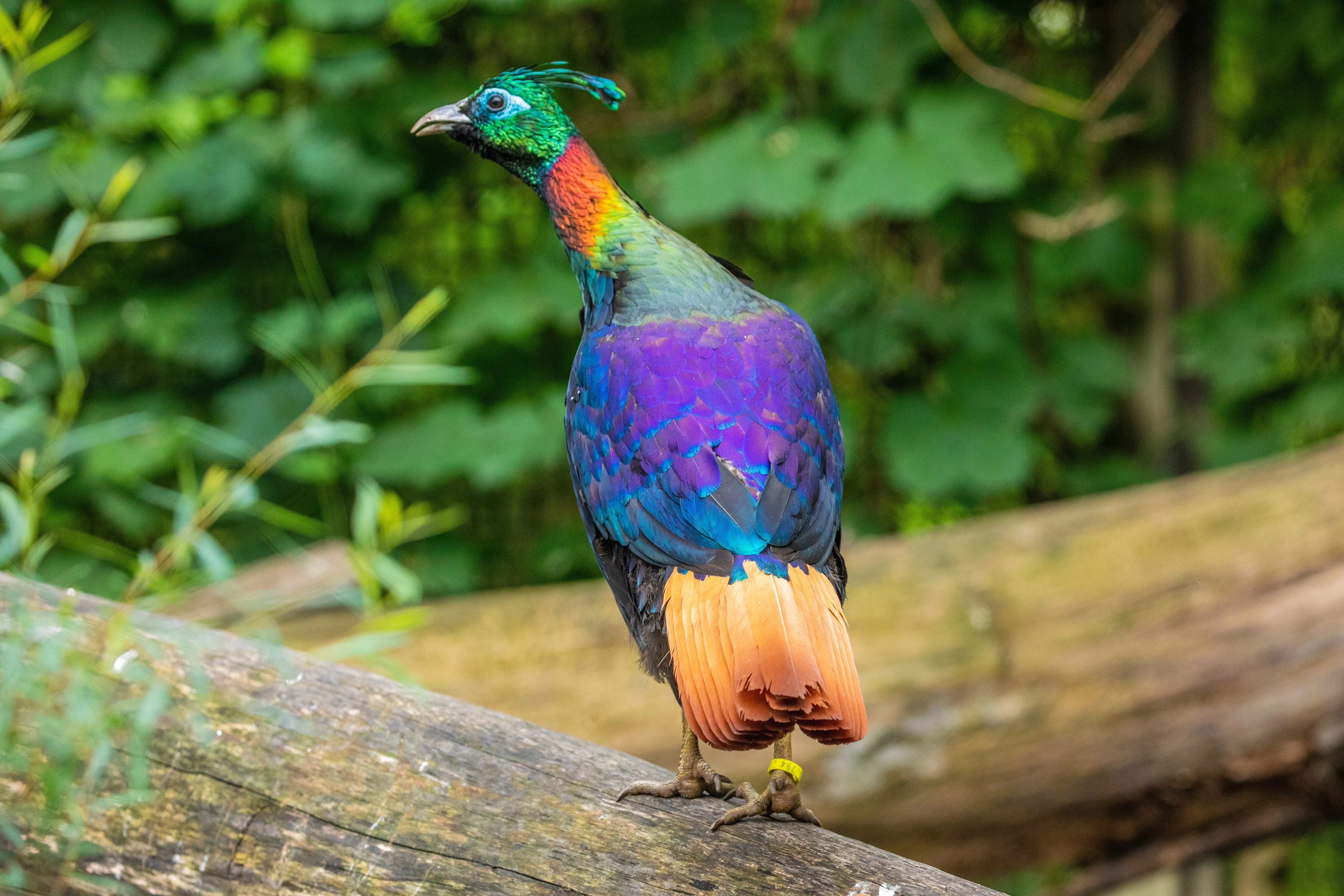
2. Himalayan woodpecker
A large woodpecker with black and white plumage and a distinctive red patch on the back of its head, the Himalayan woodpecker is a beautiful bird. The species is easiest to spot between December and February, when it is most active and the birds’ pecking is at its loudest. The sound of a woodpecker clinging to a trunk while hammering the tree with its sharp beak can resonate through Himalayan forests.
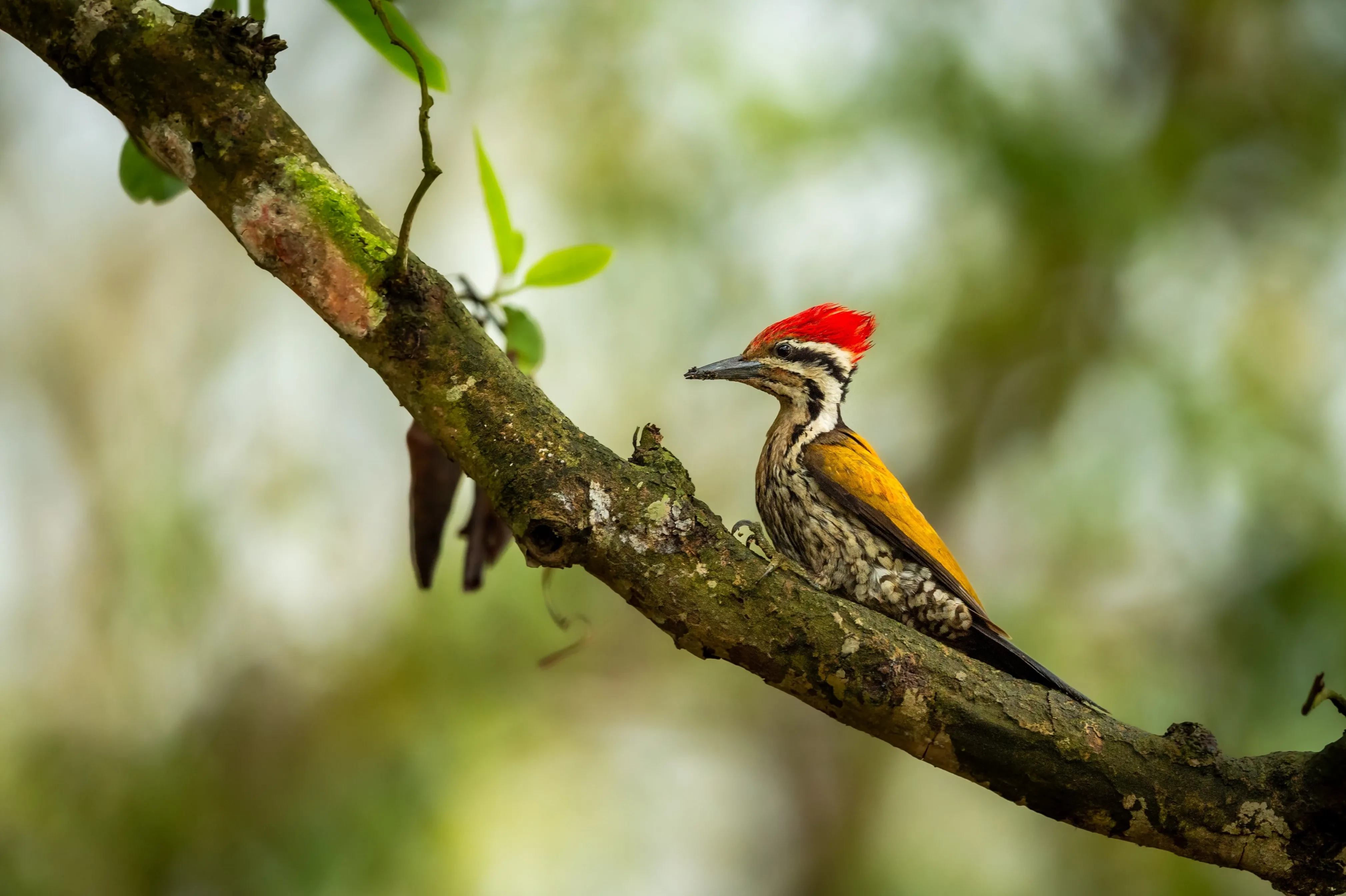
3. Himalayan griffon vulture
With a wingspan of up to 3m, the Himalayan griffon vulture is a huge bird of prey with a large body and thick muscular neck. The vulture is relatively easy to spot in the Himalayan skies thanks to its large size, bald head and hooked beak. The bird is most often spotted hovering over mountain ranges; its rectangular-shaped wings make the vulture identifiable from the ground below.
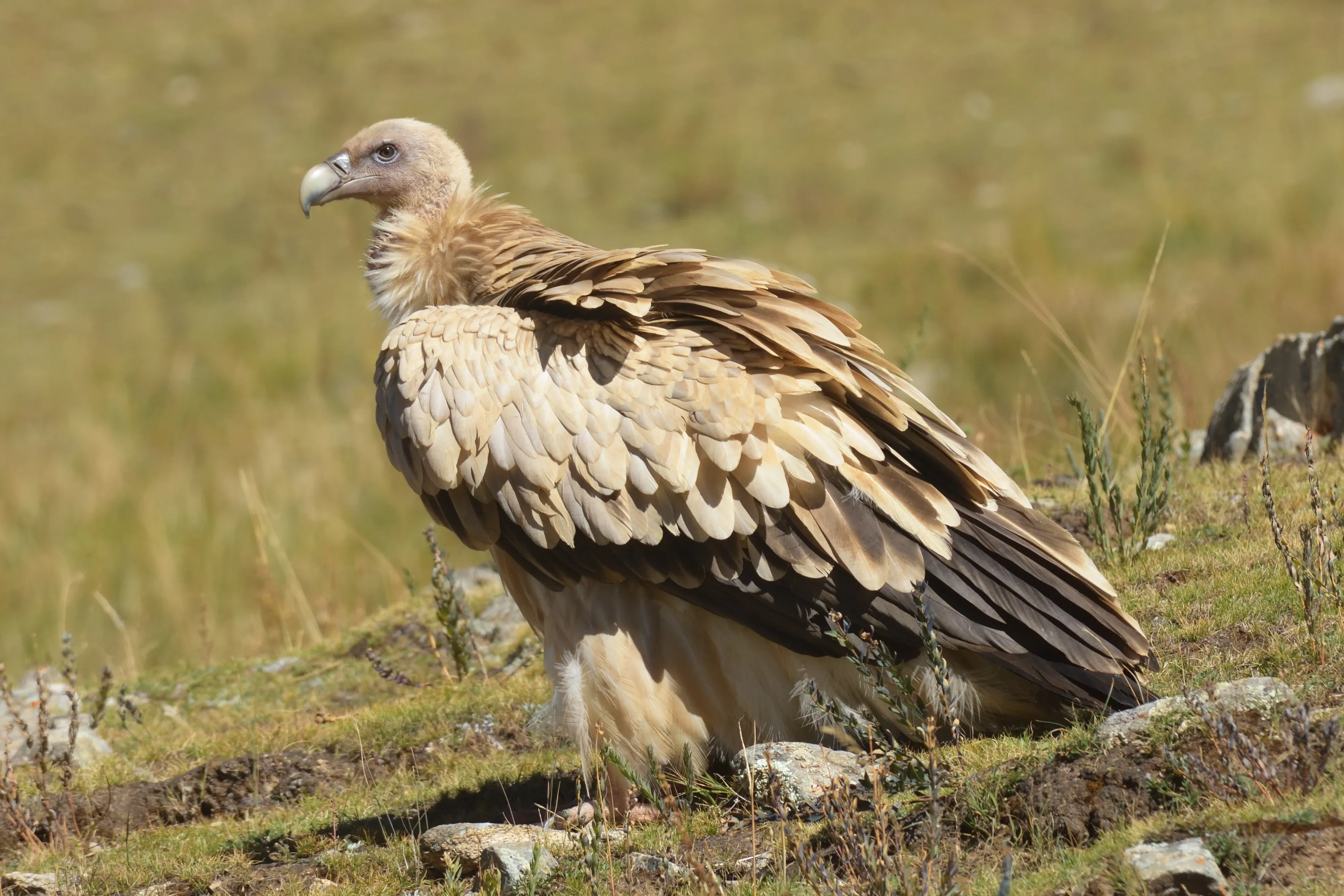
4. Asian paradise flycatcher
This impressive bird with its incredibly long tail and beautiful crest is a stunning sight. It is possible to spot the flycatcher during the summer season, when the birds can be located thanks to their high-pitched shrieking calls.
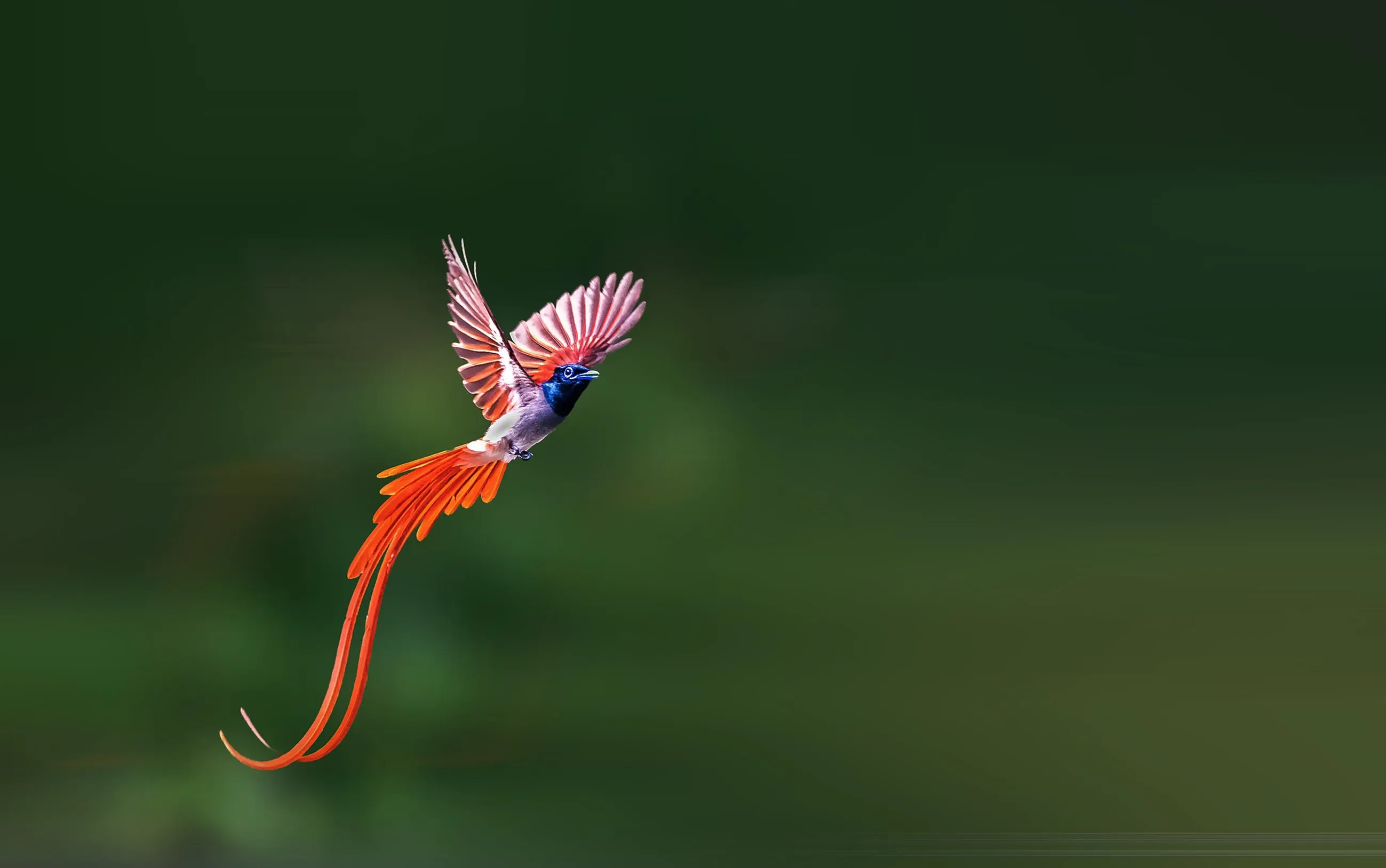
5. Brown dipper
The adorable brown dipper is a tiny aquatic bird that lives alongside calm rivers and streams. The bird has the unique ability to walk underwater and forage in the riverbed. It is best spotted in Himachal Pradesh, Uttarakhand and Sikkim during November to February. The dipper is recognisable by its high-pitched call, and stands out from the river habitat with its white throat and chestnut-coloured plumage.
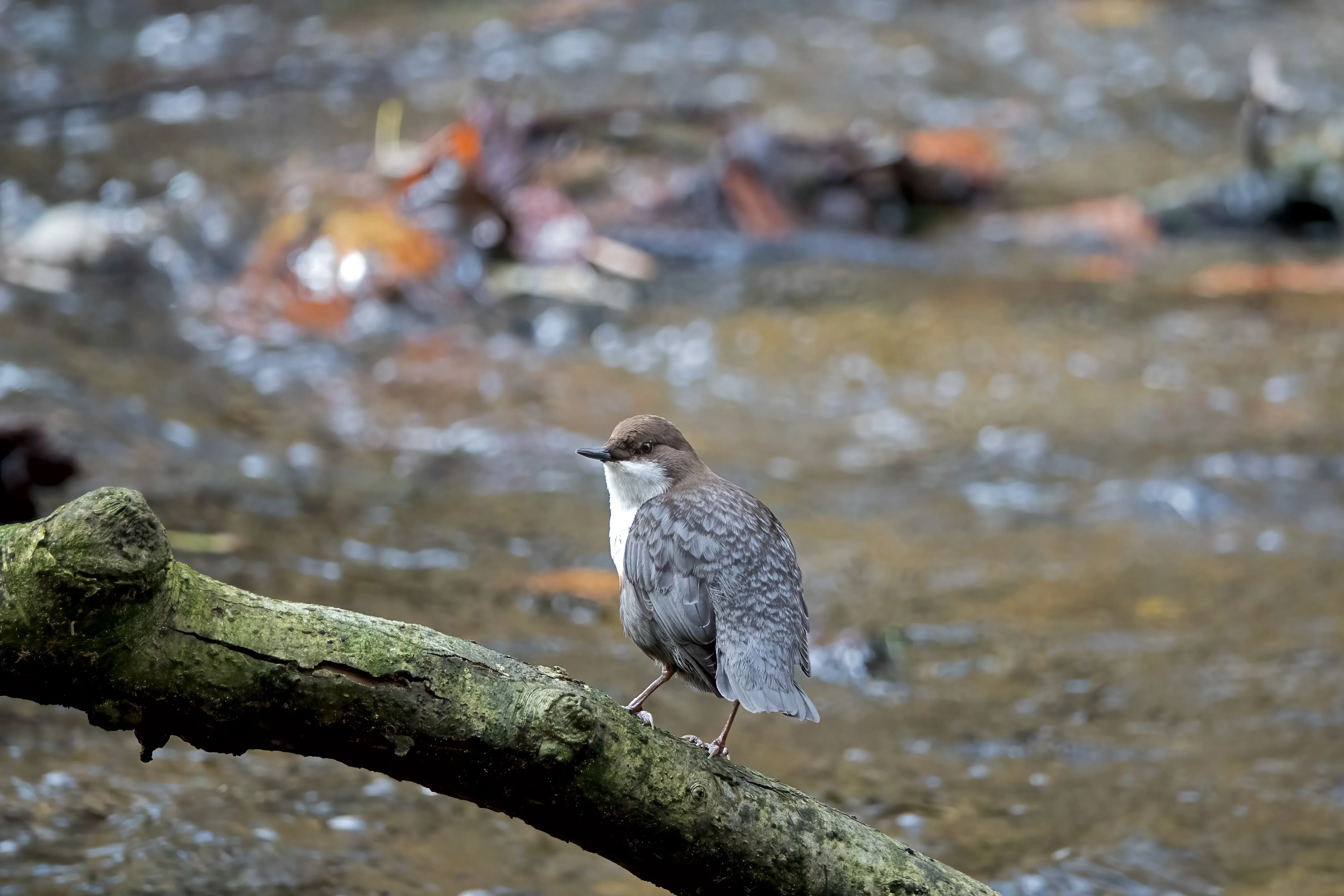
6. Satyr tragopan
Bold and beautiful pheasants with deep red plumage and brilliant white speckles, male satyr tragopans are popular birds to spot in the Himalayas. The males also have bright blue horns on the backs of their heads and perform elaborate displays to impress females, which have much subtler brown plumage. The pheasants are most commonly recorded in the rhododendron forests of Bhutan.
Top tips for birdwatching in the Himalayas
Trip timing
Plan your trip for either springtime (March and April) or autumn (October and November) if you can; these months comprise the breeding and migration season, so are the best periods to go birdwatching in the Himalayas. Birds are likely to be spotted at higher altitudes in warmer months than during winter months, when they descend in search of food.
As with birding everywhere, the best times of day to spot birds in the Himalayas are when they are most active – in the early morning and early evening (in this case, between 5 and 8am and 4 and 6pm).
Choice of clothes
Consider your surroundings when deciding what clothes to pack for your birding adventure. Opt for dull and earth-coloured clothes that will help camouflage you with the natural environment. Wear layers so you can adjust for the temperatures, which can fluctuate considerably throughout the day.
Familiarise yourself with Himalayan birds
Before you go, take the time to read up on the bird species you are likely to see in the particular area you are visiting. With close to 1,000 bird species inhabiting the Himalayas, it will be much easier to flip through your identification guide if you already have some idea of the birds you’re expecting (or hoping!) to spot.
Consider your camera
Most bird watchers will be armed with both binoculars (with at least 8x magnification) and a camera for their trip. For beginners, a 70–300mm lens is considered a good place to start; just be sure to keep the flash turned off as the light can startle wildlife. It might be worth taking a tripod, too.
Adhere to good birding etiquette
Be respectful of the birds and their habitat, and always keep your distance to avoid disturbing them (especially when nesting). Stay very quiet throughout the trip to avoid disturbing the birds, which are very sensitive to noise. Don’t litter, smoke, light fires or feed the birds. Lastly, don’t play recorded bird calls or music as this can be stressful for the birds.
The Himalayas is truly a twitchers paradise
Avid bird watchers will be richly rewarded with a trip into the Himalayas. There are so many extraordinary, breathtaking bird species in the Himalayas that it is hard to imagine any visitor returning home disappointed. From dense forests to rocky mountain terrain and vast wetlands, the Himalayas encompass habitats suitable for a great range of bird species, including raptors, passerines, wading birds and waterfowl, and it is possible to tailor a single birding trip in the Himalayas to include all of these.
Source references:
Critical Ecosystem Partnership Fund
Sanctuary Nature Foundation
Sign up for the newsletter
By clicking on “Subscribe now” I will subscribe to the Conscious Explorer newsletter with all the information about mindful travel. Information on the success measurement included in the consent, the use of the shipping service provider MailChimp, logging of the registration and your rights of revocation can be found in our privacy policy.








